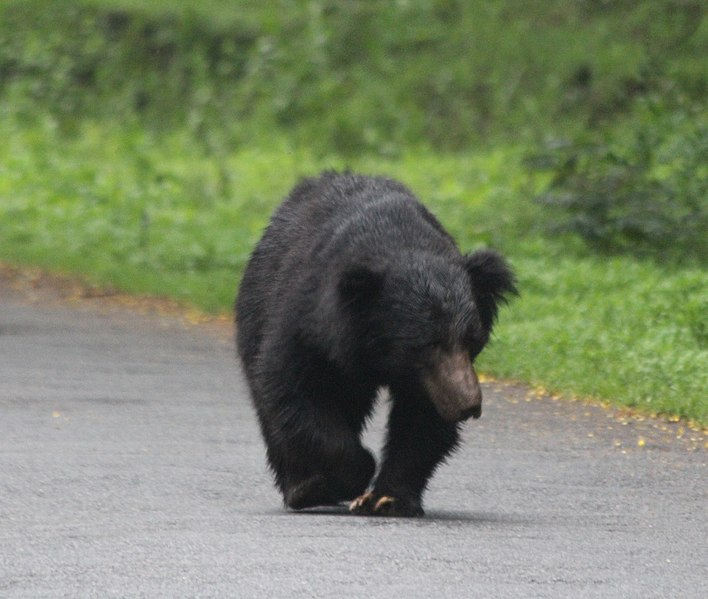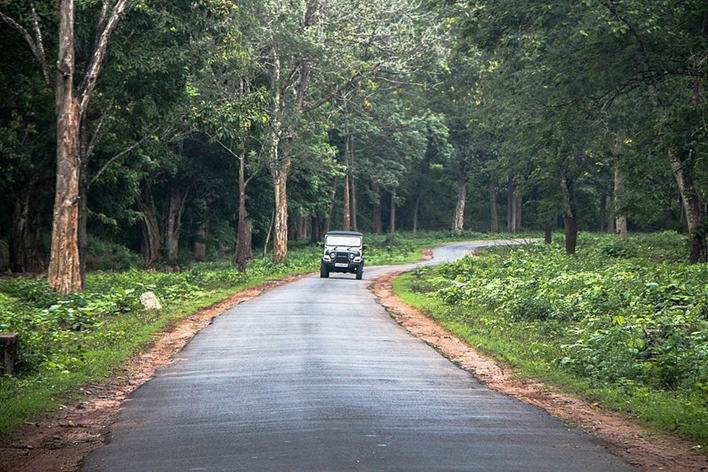Nagarhole National Park also knows as Rajiv Gandhi National Park is located in the two districts of Karnataka, namely Mysore and Kodagu. Nagarhole a combination of two Kannada words ‘Nagara’ signifying ‘Cobra’ and ‘Hole’ signifying ‘River’, justifies its name completely as several streams serpentine through the rich tropical forest of this national park.

Spread in an area of 247 square-miles, the park was initially a hunting reserve for the royals of Wodeyar dynasty, one time rulers of Kingdom of Mysore. The park was established as a wildlife sanctuary in 1955 and was upgraded into a national park in 1988. The park was declared as the 37th Tiger reserve in 1999. This national park may soon become a World Heritage Site, as it is into consideration by UNESCO World Heritage Committee.
Quick Facts about Nagarhole National Park
- Timings: 00 AM to 8:00 AM and 3:00 PM to 5:00 PM
- Entry Fee: Indian INR 200 and foreigner INR 1000
- Camera Fee: Video Camera INR 1000
- Duration: 2-3 hours
- Address: Madikeri Road, Hunsur, Karnataka 571201 (MAP)
Nagarhole National Park – An Overview
Counted as one of the well-kept national parks of India, Nagarhole is a delight for lovers of Indian Tigers and Asiatic Elephants. Dotting with captivating flora and fauna; this park has numerous varieties of wildlife present in it.
Sloth Bears, Leopards, Tigers, Wild Dogs, Sambar, Four-Horned Antelopes, Spotted Deer, Barking Deer, Elephant and Wild Boars are some of the easily spotted animals of this park. One can even become witness to a large variety of amphibians and birds here.

The River Kabini revolves around the park creating an aqueous edge with the Bandipur National Park. This combined area forms the largest conterminous forest cover towards this part of the world. This entire forest cover is abode to the largest herbivorous density in Asia and largest Asiatic Elephant density in the entire world.
From wildlife sustainability perspective, the park has successfully maintained a healthy predator-prey ratio, thereby ensuring a balance food chain cycle within its premises.

The Dominant Flora of Nagarhole National Park
The vegetation in this park predominantly comprises of moist, tropical and mixed deciduous forest, with some portions being the dry deciduous type. Rosewood, Sandalwood, Teakwood and Silver Oak are some of the more commercially important and easily available trees in this area.
Dry deciduous trees include Indian Kino Tree, Crepe myrtle, Grewiatilaefolia, Crocodile Bark and Axlewood.
Apart from these Cotton tree, Golden shower tree, Kadam, Tick clover, Ficus, India gooseberry, Tadasalu (Grewia tilaefolia) Horse nettles, Lantana, Bonesets, Mathi (Terminalia tomentosa), Honne (Pterocarpus marsupium) Nandi (Lagerstroemia lanceolata), and Clumping bamboo etc. can also be found germinating here.

The Dominant Fauna of Nagarhole National Park
Nagarhole aims to bring the most wildering effect on wildlife lovers and hence loves flourishing carnivorous and predators. Visitors can spot Wild Dogs, Hyena, Wild Bears, Leopards and Tigers in huge numbers here.
The park is also full of herbivorous animals like Spotted Deer, Barking Deer, Four-Horned Antelope, Sambar, Elephant, Gaur and Wild Boar. Bamboo thickets and luxurious forests provide the perfect backdrop to watch elephants happily roaming in their natural surroundings.
Other commonly available mammals include Mongoose, Giant Flying Squirrel, Slender Loris, Bonnet Macaque, Porcupine, Mouse-Deer, Jackal, Pangolin and Hare.
Over 250 species of birds can also be located in the vicinity of this park. Visitors can spot large groups waterfowls in River Kabini and a huge variety of woodland birds all around the park. scarlet minivet, blue-bearded bee-eater, ospreys, ducks, Malabar whistling thrush, Racket Tailed Drongo, Ibis, Honey Buzzards, a variety of Woodpeckers, Painted Stork, Pied and the Common Kingfisher are just a few of the many species of birds found here.
Best Time to Visit
October to May is the best season to visit Nagarhole National Park. The park usually remains closed during June to September, which is the rainy season here.

How to Reach Nagarhole National Park
By Air
The closest airport to the national park is in Mysore at a distance of 96 kms. The nearest international airport is located in Bangalore, which is at a distance of 236 kms. One can reach Bangalore from all the major cities across India. It is well connected with several international cities as well.
By Rail
Mysore Railway Station located 80 kms away from Nagarhole National Park is the nearest railway station. The nearest railway head is located in Bangalore at a distance of 220 kms. Bangalore is well connected with all the major cities across India. And one can take either a taxi or bus to reach the national park from here.
By Road
The sanctuary is located at a distance of 96 kms from Mysore city, 93 kms from Madikeri and 236 kms from Bangalore city.